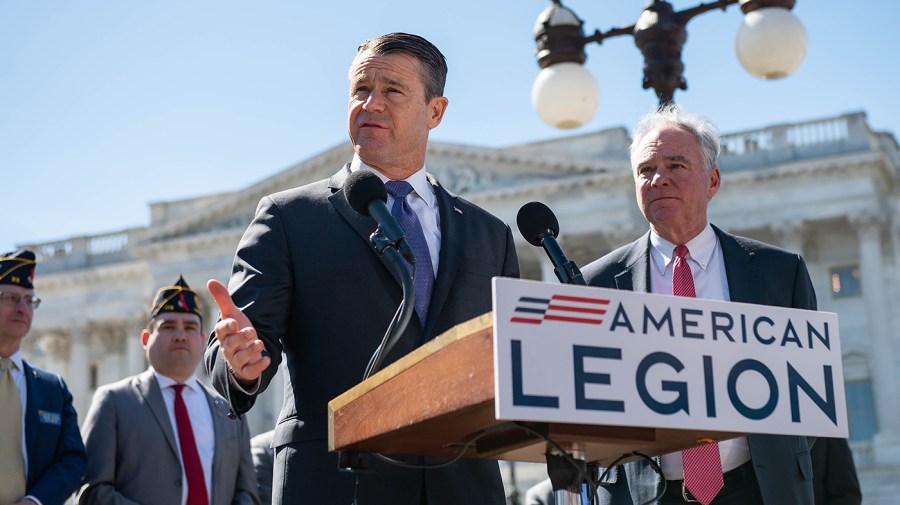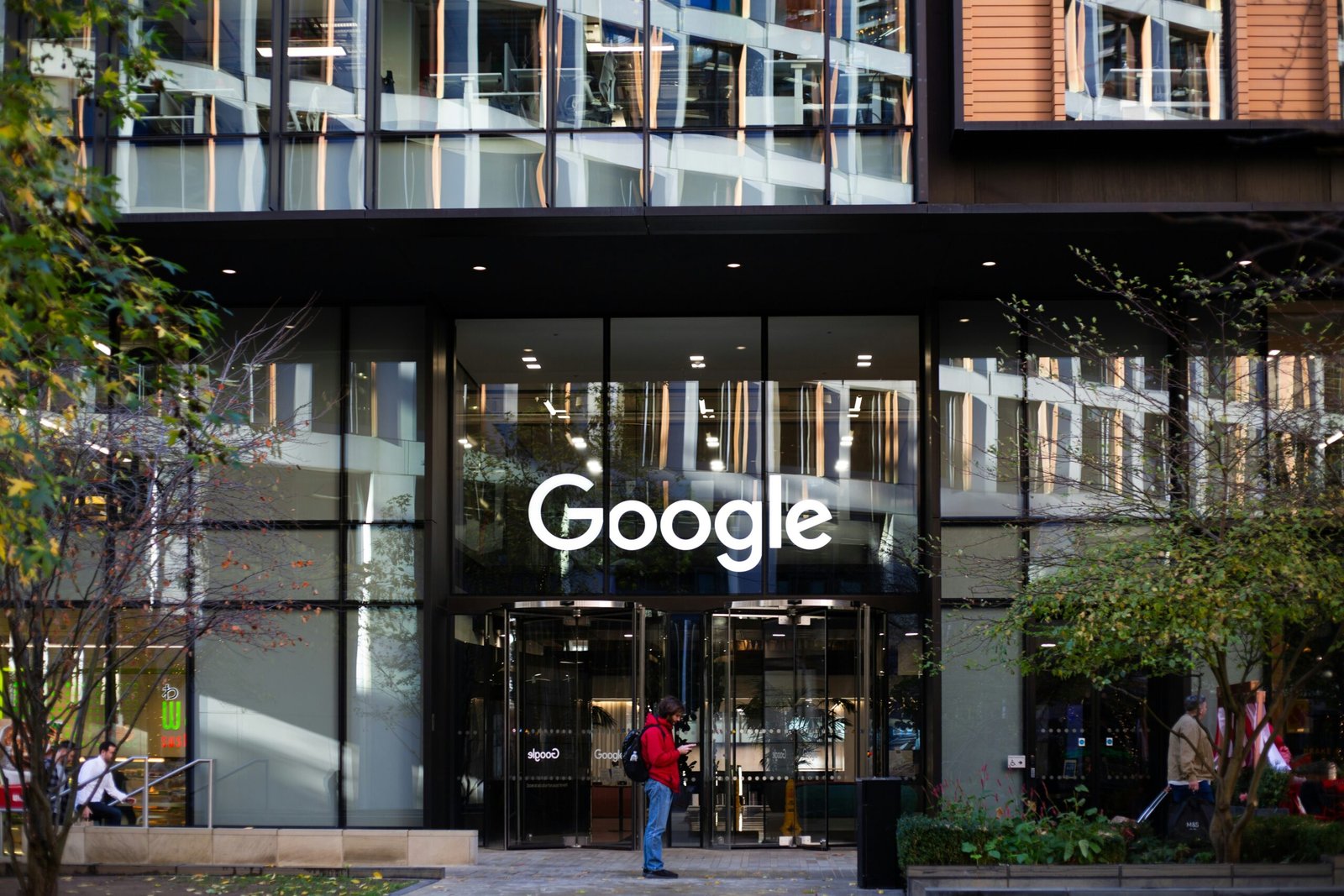Business
Looming shutdown sparks worries about CHIPS funding rollout on November 1, 2023 at 10:00 am Business News | The Hill

More than a year after President Biden signed the CHIPS and Science Act into law, the Commerce Department is pushing to get billions of dollars in semiconductor manufacturing and research incentives out the door.
But the government is set to run out of money Nov. 17, and a potential shutdown — which could slow down the program’s funding rollout — is not out of the question.
The Commerce Department’s CHIPS Program Office, which is responsible for doling out roughly $50 billion in commercial incentives and research and development (R&D) grants, would stay open during a government shutdown.
But it would “absolutely have a detrimental impact on our process,” a Commerce official, who was granted anonymity to speak candidly, told The Hill.
“It would cause a lot of challenges for us, and it would certainly impede our ability to move as fast as we want to,” the official said.
Semiconductor race takes on new urgency
Semiconductors are a vital component of everyday items, from electronic devices to transportation to military technologies.
The United States accounted for 12 percent of the world’s semiconductor manufacturing in 2020, down from 37 percent in 1990, according to the Semiconductor Industry Association’s most recent analysis.
In the race to develop the smallest, most powerful chips, the U.S. currently produces zero percent of leading-edge chips that are critical to national security.
Taiwan and South Korea are the dominant producers of the world’s leading-edge chips, raising concerns about how a potential conflict with China over Taiwan would impact supply chains.
Global demand for semiconductors has also continued to grow: McKinsey & Company estimated semiconductors could become a trillion-dollar industry by the end of the decade.
The CHIPS — which is short for the Creating Helpful Incentives to Produce Semiconductors — and Science Act aims to mitigate that risk to U.S. supply chains and increase capacity to produce high-demand chips.
“The state of the industry is one that we’re relying on Taiwan and South Korea primarily for the critical materials that are in everything we own,” Brandt Anderson, a senior policy adviser at Brownstein Hyatt Farber Schreck, told The Hill.
Before making the move to Brownstein in May, Anderson was a national security adviser for Sen. Todd Young (R-Ind.), working closely with the senator as he helped craft the CHIPS and Science Act. Young introduced earlier versions of the bill, the Endless Frontier Act, with Senate Majority Leader Chuck Schumer (D-N.Y.).
“There’s a level of urgency in figuring this out. We don’t know what the future holds,” Anderson added, pointing to pandemic-induced supply chain disruptions and the potential conflict in the Pacific.
Funding to start flowing by the end of the year
The CHIPS Program Office is working with $39 billion for commercial incentives and $11 billion in R&D funding.
The office has issued two funding opportunity notices so far this year.
In February, the CHIPS Program Office opened calls for pre-applications and applications for commercial fabrication leading-edge, current-generation and mature-node semiconductors facilities with $300 million or more in capital investment.
It expanded that in June to include large-scale semiconductor materials and manufacturing equipment.
At the end of September, the office issued an additional funding opportunity for small-scale supply chain projects of less than $300 million in capital investment.
“When our team is making a decision about where the funds are going to go, they first and foremost look through the lens of national and economic security,” the Commerce official said, adding commercial viability and a workforce plan are also critical components.
The first tranche of awards is expected to roll out by the end of this year.
Opportunities for a slice of the $11 billion in R&D funding have yet to be announced, but Commerce expects to release an additional funding opportunity notice later this year.
There’s been a huge amount of interest in the upcoming awards.
“We’ve received more than 530 statements of interests seeking CHIPS incentives to build projects across 42 states and have received over 120 pre and full applications,” the Commerce official said, emphasizing that the program cannot replace private capital.
Since President Biden took office, companies have announced more than $231 billion in semiconductor industry investments, the Commerce official noted.
Around $166 billion of that has been announced since the CHIPS and Science Act was signed into law last August.
The goal of the legislation was to incentivize companies to invest in manufacturing in the U.S., something Anderson observed many companies are eager to do anyway
“This thing lived and died many times, and we heard from a lot of companies that were saying, ‘Our customers are still asking for us to be in the United States. We are going to come. We are still moving forward. We would love for CHIPS Act to be law, but we’re going to come regardless,’” Anderson said.
Navigating challenges as priorities compete
In addition to the looming specter of a government shutdown, the program office has to juggle competing priorities with a limited amount of funding.
“The key challenge moving forward is to ensure CHIPS incentives get out the door in a timely manner and reinvigorate U.S. chip production and innovation without being spread too thin. Striking the right balance will be critical to making the most of limited CHIPS dollars,” Dan Rosso, senior director of communications at the Semiconductor Industry Association, told The Hill.
Companies are also watching to see what kind of strings may be attached to awards, including outstanding questions regarding the government’s right to intellectual property developed using CHIPS funds.
“We’ll be watching what kind of terms and conditions the Department of Commerce proposes to these different companies that come along with the money,” Angela Styles, a partner at Akin Gump Strauss Hauer & Feld, told The Hill.
“We would not make them do anything that is against their commercial interests,” the Commerce official said.
Akin Gump Senior Counsel Josh Teitelbaum, who works closely with companies in the semiconductor supply chain that are seeking CHIPS and Science Act funding, is watching the award amounts as they roll out.
“Whether they’re higher or lower will be an indication of how much funding is left in the pot to distribute to the other projects,” Teitelbaum said. “If the awards are perhaps larger than expected, other companies may get nervous about what is left as we get closer to the smaller supply chains or the R&D funding.”
Industry sources are nervous about investment
Industry representatives also told The Hill they’re worried the program may not sufficiently invest in all aspects of the supply chain, including workforce development and integrated chip manufacturing processes.
“You could also think about it as your brain in your body; the rest of your nervous system, your skeletal system, that’s what the rest of the ecosystem amounts to,” Dr. John Mitchell, president and CEO of the global electronics manufacturing industry association IPC, told The Hill.
“If you consider it just a chip act instead of a systems act, it will fail,” he added. “It’s a good step, but it’s literally just the first step.”
Such an ask may fall outside the scope of the current funding.
“It’s important to note that we are not trying to bring the entire semiconductor industry to the United States,” the Commercial official said, adding, “We want to bring some of those manufacturing jobs back here.”
But a big part of bringing those jobs back includes training people to take them on, which could be a challenge.
In a July report, the Semiconductor Industry Association estimated that roughly 67,000 — 58 percent — of the 115,000 projected new jobs in the semiconductor industry by 2030 could go unfilled.
The Commerce official noted that each applicant is required to include a workforce plan to build the next generation of workers, but they acknowledged the risk.
“If we don’t continue to work on these creative solutions and getting more people in the workforce and getting those people trained in the workforce, then there is going to be a shortage of semiconductor workers. And that’s something that we’re very focused on here,” they said.
Business, Energy & Environment, News, Technology, CHIPS and Science Act, Chuck Schumer, Commerce Department, Joe Biden, semiconductors, Todd Young More than a year after President Biden signed the CHIPS and Science Act into law, the Commerce Department is pushing to get billions of dollars in semiconductor manufacturing and research incentives out the door. But the government is set to run out of money Nov. 17, and a potential shutdown — which could slow down…
Business
Google Accused Of Favoring White, Asian Staff As It Reaches $28 Million Deal That Excludes Black Workers

Google has tentatively agreed to a $28 million settlement in a California class‑action lawsuit alleging that white and Asian employees were routinely paid more and placed on faster career tracks than colleagues from other racial and ethnic backgrounds.
- A Santa Clara County Superior Court judge has granted preliminary approval, calling the deal “fair” and noting that it could cover more than 6,600 current and former Google workers employed in the state between 2018 and 2024.

How The Discrimination Claims Emerged
The lawsuit was brought by former Google employee Ana Cantu, who identifies as Mexican and racially Indigenous and worked in people operations and cloud departments for about seven years. Cantu alleges that despite strong performance, she remained stuck at the same level while white and Asian colleagues doing similar work received higher pay, higher “levels,” and more frequent promotions.
Cantu’s complaint claims that Latino, Indigenous, Native American, Native Hawaiian, Pacific Islander, and Alaska Native employees were systematically underpaid compared with white and Asian coworkers performing substantially similar roles. The suit also says employees who raised concerns about pay and leveling saw raises and promotions withheld, reinforcing what plaintiffs describe as a two‑tiered system inside the company.
Why Black Employees Were Left Out
Cantu’s legal team ultimately agreed to narrow the class to employees whose race and ethnicity were “most closely aligned” with hers, a condition that cleared the path to the current settlement.

The judge noted that Black employees were explicitly excluded from the settlement class after negotiations, meaning they will not share in the $28 million payout even though they were named in earlier versions of the case. Separate litigation on behalf of Black Google employees alleging racial bias in pay and promotions remains pending, leaving their claims to be resolved in a different forum.
What The Settlement Provides
Of the $28 million total, about $20.4 million is expected to be distributed to eligible class members after legal fees and penalties are deducted. Eligible workers include those in California who self‑identified as Hispanic, Latinx, Indigenous, Native American, American Indian, Native Hawaiian, Pacific Islander, and/or Alaska Native during the covered period.
Beyond cash payments, Google has also agreed to take steps aimed at addressing the alleged disparities, including reviewing pay and leveling practices for racial and ethnic gaps. The settlement still needs final court approval at a hearing scheduled for later this year, and affected employees will have a chance to opt out or object before any money is distributed.
H2: Google’s Response And The Broader Stakes
A Google spokesperson has said the company disputes the allegations but chose to settle in order to move forward, while reiterating its public commitment to fair pay, hiring, and advancement for all employees. The company has emphasized ongoing internal audits and equity initiatives, though plaintiffs argue those efforts did not prevent or correct the disparities outlined in the lawsuit.
For many observers, the exclusion of Black workers from the settlement highlights the legal and strategic complexities of class‑action discrimination cases, especially in large, diverse workplaces. The outcome of the remaining lawsuit brought on behalf of Black employees, alongside this $28 million deal, will help define how one of the world’s most powerful tech companies is held accountable for alleged racial inequities in pay and promotion.
Business
Luana Lopes Lara: How a 29‑Year‑Old Became the Youngest Self‑Made Woman Billionaire

At just 29, Luana Lopes Lara has taken a title that usually belongs to pop stars and consumer‑app founders.
Multiple business outlets now recognize her as the world’s youngest self‑made woman billionaire, after her company Kalshi hit an 11 billion dollar valuation in a new funding round.
That round, a 1 billion dollar Series E led by Paradigm with Sequoia Capital, Andreessen Horowitz, CapitalG and others participating, instantly pushed both co‑founders into the three‑comma club. Estimates place Luana’s personal stake at roughly 12 percent of Kalshi, valuing her net worth at about 1.3 billion dollars—wealth tied directly to equity she helped create rather than inheritance.

Kalshi itself is a big part of why her ascent matters.
Founded in 2019, the New York–based company runs a federally regulated prediction‑market exchange where users trade yes‑or‑no contracts on real‑world events, from inflation reports to elections and sports outcomes.
As of late 2025, the platform has reached around 50 billion dollars in annualized trading volume, a thousand‑fold jump from roughly 300 million the year before, according to figures cited in TechCrunch and other financial press. That hyper‑growth convinced investors that event contracts are more than a niche curiosity, and it is this conviction—expressed in billions of dollars of new capital—that turned Luana’s share of Kalshi into a billion‑dollar fortune almost overnight.
Her path to that point is unusually demanding even by founder standards. Luana grew up in Brazil and trained at the Bolshoi Theater School’s Brazilian campus, where reports say she spent up to 13 hours a day in class and rehearsal, competing for places in a program that accepts fewer than 3 percent of applicants. After a stint dancing professionally in Austria, she pivoted into academics, enrolling at the Massachusetts Institute of Technology to study computer science and mathematics and later completing a master’s in engineering.
During summers she interned at major firms including Bridgewater Associates and Citadel, gaining a front‑row view of how global macro traders constantly bet on future events—but without a simple, regulated way for ordinary people to do the same.

That realization shaped Kalshi’s founding thesis and ultimately her billionaire status. Together with co‑founder Tarek Mansour, whom she met at MIT, Luana spent years persuading lawyers and U.S. regulators that a fully legal event‑trading exchange could exist under commodities law. Reports say more than 60 law firms turned them down before one agreed to help, and the company then spent roughly three years in licensing discussions with the Commodity Futures Trading Commission before gaining approval. The payoff is visible in 2025’s numbers: an 11‑billion‑dollar valuation, a 1‑billion‑dollar fresh capital injection, and a founder’s stake that makes Luana Lopes Lara not just a compelling story but a data point in how fast wealth can now be created at the intersection of finance, regulation, and software.
Business
Harvard Grads Jobless? How AI & Ghost Jobs Broke Hiring

America’s job market is facing an unprecedented crisis—and nowhere is this more painfully obvious than at Harvard, the world’s gold standard for elite education. A stunning 25% of Harvard’s MBA class of 2025 remains unemployed months after graduation, the highest rate recorded in university history. The Ivy League dream has become a harsh wakeup call, and it’s sending shockwaves across the professional landscape.

Jobless at the Top: Why Graduates Can’t Find Work
For decades, a Harvard diploma was considered a golden ticket. Now, graduates send out hundreds of résumés, often from their parents’ homes, only to get ghosted or auto-rejected by machines. Only 30% of all 2025 graduates nationally have found full-time work in their field, and nearly half feel unprepared for the workforce. “Go to college, get a good job“—that promise is slipping away, even for the smartest and most driven.
Tech’s Iron Grip: ATS and AI Gatekeepers
Applicant tracking systems (ATS) and AI algorithms have become ruthless gatekeepers. If a résumé doesn’t perfectly match the keywords or formatting demanded by the bots, it never reaches human eyes. The age of human connection is gone—now, you’re just a data point to be sorted and discarded.
AI screening has gone beyond basic qualifications. New tools “read” for inferred personality and tone, rejecting candidates for reasons they never see. Worse, up to half of online job listings may be fake—created simply to collect résumés, pad company metrics, or fulfill compliance without ever intending to fill the role.
The Experience Trap: Entry-Level Jobs Require Years
It’s not just Harvard grads who are hurting. Entry-level roles demand years of experience, unpaid internships, and portfolios that resemble a seasoned professional, not a fresh graduate. A bachelor’s degree, once the key to entry, is now just the price of admission. Overqualified candidates compete for underpaid jobs, often just to survive.
One Harvard MBA described applying to 1,000 jobs with no results. Companies, inundated by applications, are now so selective that only those who precisely “game the system” have a shot. This has fundamentally flipped the hiring pyramid: enormous demand for experience, shrinking chances for new entrants, and a brutal gauntlet for anyone not perfectly groomed by internships and coaching.
Burnout Before Day One
The cost is more than financial—mental health and optimism are collapsing among the newest generation of workers. Many come out of elite programs and immediately end up in jobs that don’t require degrees, or take positions far below their qualifications just to pay the bills. There’s a sense of burnout before careers even begin, trapping talent in a cycle of exhaustion, frustration, and disillusionment.
Cultural Collapse: From Relationships to Algorithms
What’s really broken? The culture of hiring itself. Companies have traded trust, mentorship, and relationships for metrics, optimizations, and cost-cutting. Managers no longer hire on potential—they rely on machines, rankings, and personality tests that filter out individuality and reward those who play the algorithmic game best.
AI has automated the very entry-level work that used to build careers—research, drafting, and analysis—and erased the first rung of the professional ladder for thousands of new graduates. The result is a workforce filled with people who know how to pass tests, not necessarily solve problems or drive innovation.
The Ghost Job Phenomenon
Up to half of all listings for entry-level jobs may be “ghost jobs”—positions posted online for optics, compliance, or future needs, but never intended for real hiring. This means millions of job seekers spend hours on applications destined for digital purgatory, further fueling exhaustion and cynicism.
Not Lazy—Just Locked Out
Despite the headlines, the new class of unemployed graduates is not lazy or entitled—they are overqualified, underleveraged, and battered by a broken process. Harvard’s brand means less to AI and ATS systems than the right keyword or résumé format. Human judgment has been sidelined; individuality is filtered out.

What’s Next? Back to Human Connection
Unless companies rediscover the value of human potential, mentorship, and relationships, the job search will remain a brutal numbers game—one that even the “best and brightest” struggle to win. The current system doesn’t just hurt workers—it holds companies back from hiring bold, creative talent who don’t fit perfect digital boxes.
Key Facts:
- 25% of Harvard MBAs unemployed, highest on record
- Only 30% of 2025 grads nationwide have jobs in their field
- Nearly half of grads feel unprepared for real work
- Up to 50% of entry-level listings are “ghost jobs”
- AI and ATS have replaced human judgment at most companies
If you’ve felt this struggle—or see it happening around you—share your story in the comments. And make sure to subscribe for more deep dives on the reality of today’s economy and job market.
This is not just a Harvard problem. It’s a sign that America’s job engine is running on empty, and it’s time to reboot—before another generation is locked out.

 Entertainment4 weeks ago
Entertainment4 weeks agoColombia’s ‘Doll’ Arrest: Police Say a 23-Year-Old Orchestrated Hits, Including Her Ex’s Murder

 Entertainment4 weeks ago
Entertainment4 weeks agoHow The Grinch Became The Richest Christmas Movie Ever

 Entertainment4 weeks ago
Entertainment4 weeks agoMiley Cyrus Is Engaged to Maxx Morando

 Business4 weeks ago
Business4 weeks agoLuana Lopes Lara: How a 29‑Year‑Old Became the Youngest Self‑Made Woman Billionaire

 Film Industry3 weeks ago
Film Industry3 weeks agoDisney Brings Beloved Characters to ChatGPT After $1 Billion OpenAI Deal

 Entertainment4 weeks ago
Entertainment4 weeks agoMariah Carey’s One Holiday Hit Pays her $3.3 Million a Year

 Film Industry3 weeks ago
Film Industry3 weeks agoNetflix Got Outbid: Paramount Drops a $108 Billion Cash Bomb on Warner Bros.

 Entertainment4 weeks ago
Entertainment4 weeks agoAnne Hathaway Just Turned Her Instagram Bio Into a 2026 Release Calendar





























